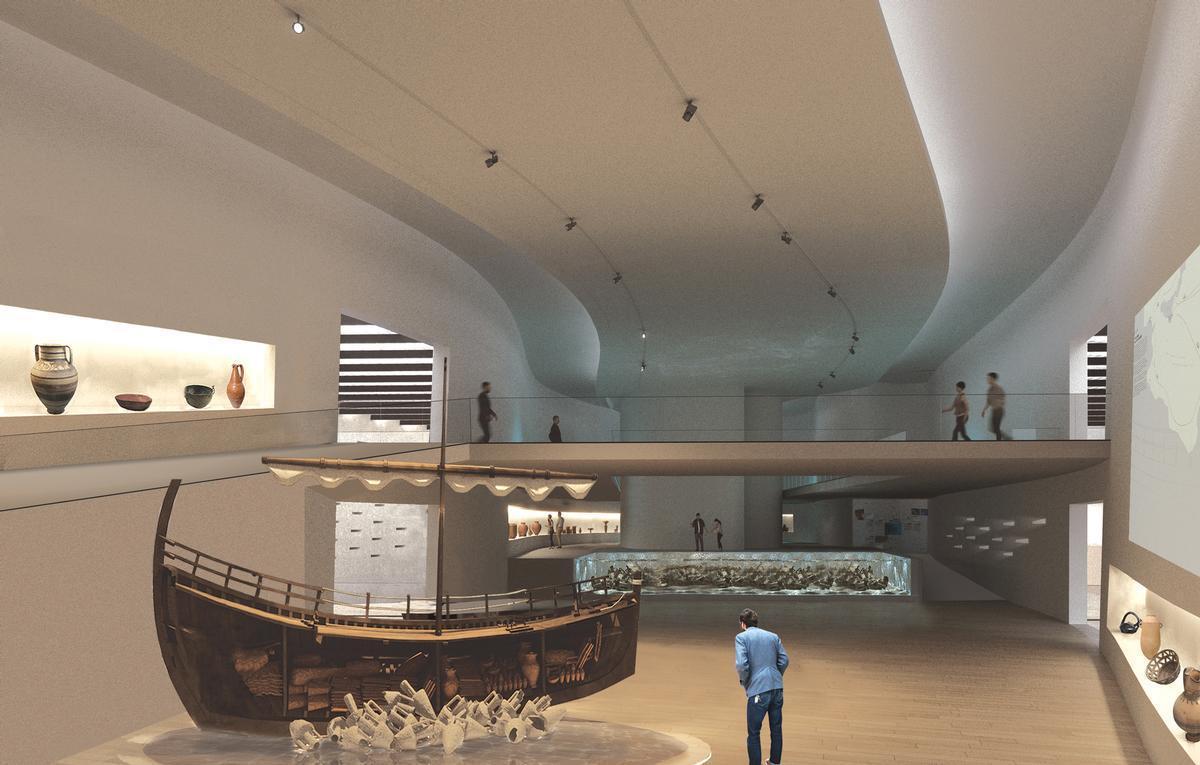The museum, being built on the site of a former hospital in the heart of Nicosia, is set to become the main repository for the island’s antiquities. Construction began in January 2023, and completion was originally planned for 9 July 2026. However, on Thursday, 9 October, it was announced that Cyfield, the company responsible for the project, submitted a new request to the government to extend the approved construction schedule. If approved, completion could be postponed to the end of 2027.
Reasons for the Delay
According to the Department of Public Works, the delays are multi-faceted:
- Extreme weather conditions, including prolonged heat waves in summer 2024
- Strikes among concrete industry workers
- Modifications to the original architectural plans
Additionally, technical challenges arose due to the site’s characteristics. Contractors had to drain an adjacent riverbed, carry out extensive earthworks, and construct an additional engineering structure to reinforce the foundation.
Eva Iordanou, a departmental representative, described the project as an “extremely complex undertaking facing unprecedented situations.” Despite these difficulties, the contractor has not requested an increase in the budget, which remains at €144 million.B

Impact on the Schedule
Cyfield representative Yorgos Chrisohos responded to parliamentary criticism by stating that the project is proceeding as planned, emphasizing that the original timeline was unrealistic. He noted that the museum is more than a building — it is a work of architectural art requiring meticulous planning and high-quality execution.
However, experts from the Scientific-Technical Chamber of Cyprus (ETEK) expressed concern: out of the allocated €144 million, only about €30 million has been spent, indicating significant delays. Parliamentarians have requested detailed information on how much of the budget should have been used in the first 35 months of construction.
Next Steps
Cypriot authorities plan to review the contractor’s request in early 2026 and make a decision regarding the potential extension. The project is particularly important as the museum is intended to become a central cultural landmark of Nicosia and a symbol of a new phase in the development of archaeology and tourism on the island.
The museum will cover 30,000 m² on a 40,000 m² site, incorporating permanent and temporary exhibitions, restoration laboratories, an underground parking area, a café, a library, an amphitheater, and an art shop. Around 6,500 artifacts, many never before displayed to the public, are expected to be exhibited.
Experts note that the opening of the new archaeological museum will be a major step for cultural tourism in Cyprus, though each month of delay increases the risk of higher costs and may affect the official opening timeline.
Public Oversight and Cultural Significance
Cypriot parliamentarians and public organizations are calling for transparency and strict control over deadlines. The public eagerly anticipates the museum’s opening, which is expected to establish Nicosia as one of the key cultural centers of the Eastern Mediterranean.
If completed without significant budget overruns, the project could serve as a model of balancing cultural heritage with modern technology, further enhancing Cyprus’s status as an island of history, culture, and innovation.
